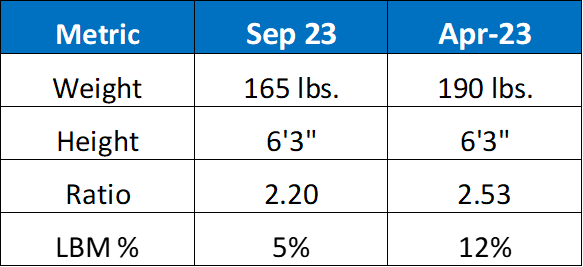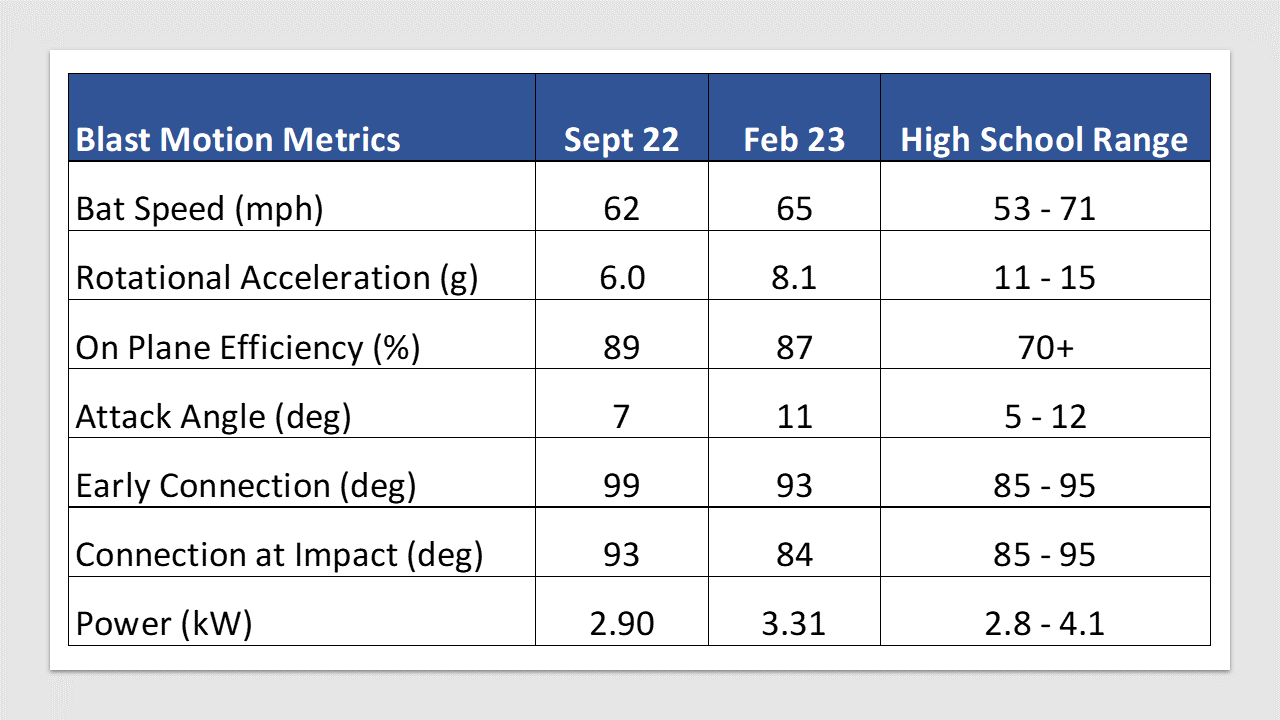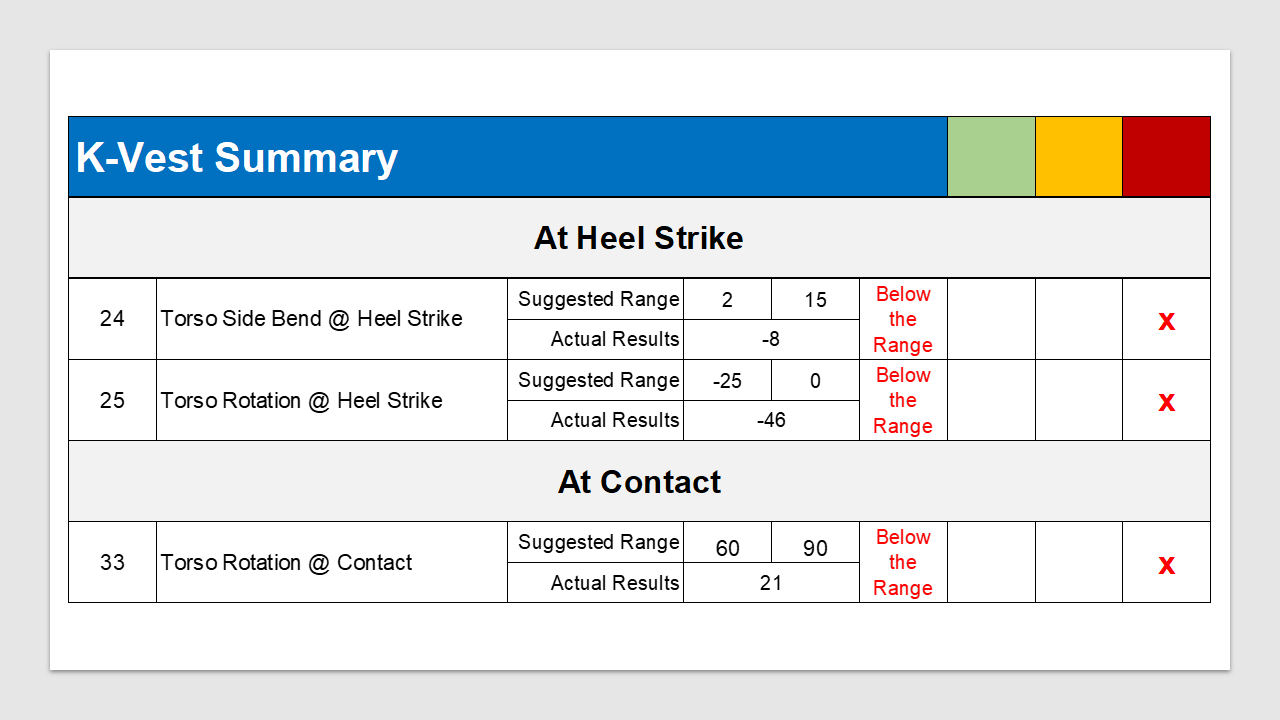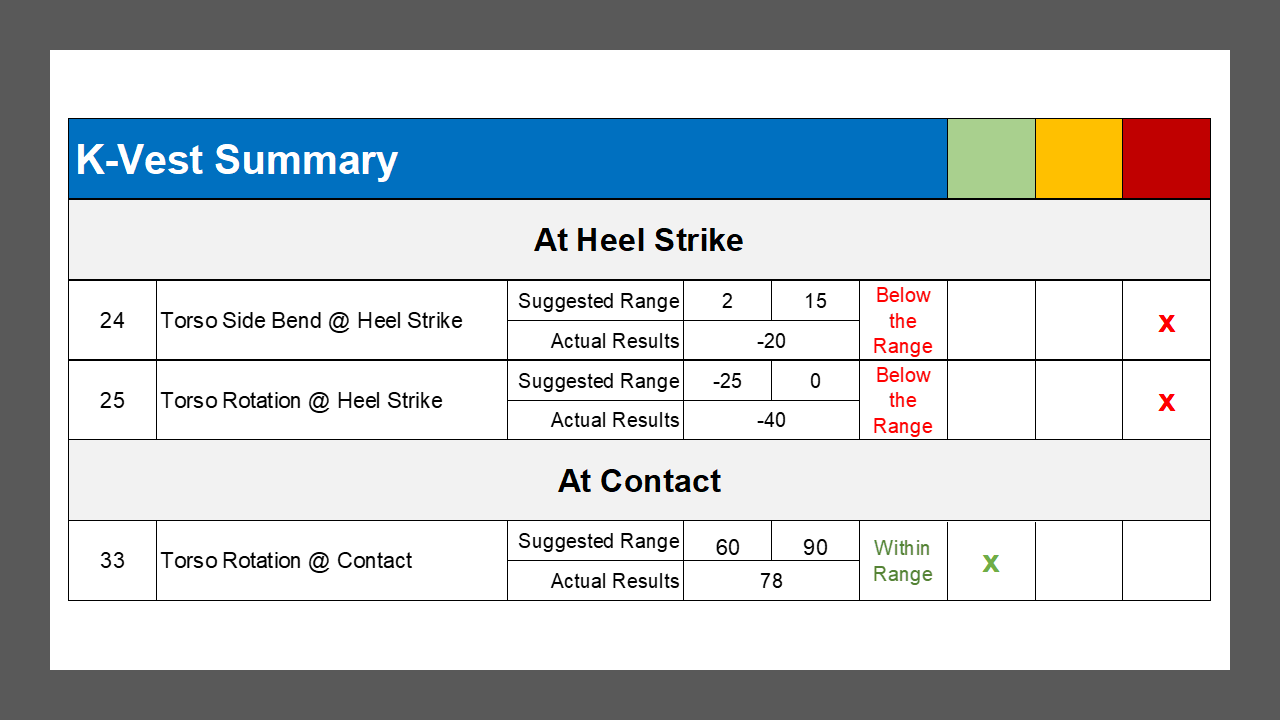
Wagner Baseball commit Connor Roche is on fire this spring at Westwood High in Westwood, New Jersey. Ten games into the spring, he is batting .667 and has a .939 slugging average. He has had at least one hit in every single game with several for extra bases. While his batting average is probably unsustainable, his overall improvement is quite impressive. Needless to say, his hard work is paying off in a big way!
How did he do it?
Connor started his training last summer with a complete upfront assessment which included:
-
- Lean Body Mass Evaluation
- Movement Screen
- Strength and Power Testing
- Blast Motion Review
- K-Vest Analysis
- Video Review and Analysis
The initial assessment helps us create a custom plan for each athlete and Connor’s programming during the past year has been addressing his strengths and potential areas of improvement both inside and outside the nets. Let’s review each in some detail.
Lean Body Mass Evaluation
At the time of his initial assessment, Connor was 6’3”, weighing 165 lbs. translating into a 2.2x weight to height ratio. Our recommended ratio for our athletes is 2.5-3.0x. So, Connor had some work to do and as you can see by April this year, he had gained 25 lbs. Although his LBM% is up from 5% to 12%, this is well within the <15% range we look for in high performance athletes.

Movement Screen
His initial movement screen highlighted several areas to focus on including:
-
- Insufficient Core Control – All movement is generated proximal (close to the body) to distal (limbs / outer segments). In other words, all movement is generated from the core. Improving Connor’s core strength was #1 on his priority list..
- Lower Body Strength / Stability – Creating a stable base to swing from is key. This will help create a better linear move and minimize his heavy front leg in order to help correct lead leg blocking issues.
- Lat Length / Tightness – Tight lats can negatively affect scap loading and causing the athlete to counter-rotate excessively with the upper body to compensate, as we see with Connor’s K-vest metrics for late torso rotation at heel strike and contact.
Strength and Power Testing
His strength and power testing eval highlighted insufficient overall lower and upper body strength which really wasn’t a surprise given his 2.2x weight to height ratio. The big story here is Connor’s eccentric force production. This is the ability to decelerate the lower half more efficiently (quickly) in order to create more power in his lead leg. And, given his height at 6’3”, Connor’s long levers could bring significant benefits for him at the plate, as long as he has the strength to control them. During the past 10 months, his weight room numbers have increased over 20% which has given him additional power at the plate.

His power testing results have also shown a significant improvement. Both his CMJ and Squat Jump power production numbers are up. When he first began his training, his Force Velo Profile had a Force Deficit. As his strength has improved, he now has a more balanced force velo profile in which more power is being created through muscular force.

Blast Motion Metrics
Connor’s Blast Motion metrics were generally in line with his level of development. The only metric that he needed to improve was his rotational acceleration (RA). This was partially due to weakness in the anterior core and lower half strength causing the K-Vest metrics highlighted below. Although his RA has improved, there is still more room for improvement.

K-vest (Posture) Assessment
K-vest is a motion capture technology which allows you to measure your posture and movement patterns of the upper body throughout the swing from first move to heel strike through to contact. Connor’s initial results demonstrated relatively good overall postural patterns, with only three measurements standing out:
-
- Torso Rotation @ Heel Strike
- Torso Side Bend @ Heel Strike
- Torso Rotation @ Contact
These three issues are all interrelated. Fixing one will create positive change further down the line. While utilizing hitting drills is in order, we needed to first address Connor’s core strength and lower half strength/stability.
Let’s take a look at each:
-
- Torso Side Bend @ Heel Strike – Connor’s reading of < 2 degrees indicated an excessive forward tilt at heel strike. This can among other things create a forward of center landing. This will cause the front side to be heavy when it’s time to transfer energy from the lead leg due to late torso rotation. This would help explain Connor’s lead leg block issue that we saw in his video analysis.
- Torso Rotation @ Heel Strike – More than -25 degrees of counter- rotation at heel strike can cause sequencing issues due to the torso starting behind the line. This can also cause the torso to jump the sequence and start early losing kinetic energy transfer- thus negatively affecting rotational acceleration (see Blast metrics).
- Torso Rotation @ Contact – As stated above, late torso rotation is one of the effects of Connor’s side bend. Fixing the side bend will create a more vertical axis to rotate from and in turn, fix rotation at contact as well as his rotational acceleration numbers we saw with Blast.
September 2022

Below are the K-vest results for the same metrics in April 2023. Although, there is still some work to be done, he has made great strides in addressing his torso related issues from his initial assessment. This is more than likely due to increases in core and lower body strength we saw in his strength metrics.
April 2023

Video Review and Analysis
Connor’s hitting video analysis demonstrated a generally clean swing with very few mechanical-disconnects. The review highlighted one potential area of improvement, an Inefficient Lead Leg Block.
Inefficient Lead Leg Block – Generally happens when a hitter has difficulty being able to efficiently transition ground reaction forces from the linear phase of the swing into rotation. This can compromise proper sequencing from the lower body into the upper body, thereby reducing power potential being distributed efficiently through the core and into the hands and ultimately the bat.
A front leg / front side that does not firm up immediately at heel plant will continue to “drift” or slide either towards the pitcher, or laterally. Different players have different degrees of knee flexion and that’s ok, as long as they decrease that flexion after heel plant… and do it quickly! If not, this can negatively affect a player’s front side stability and ultimately affect lower half angular velocities transferred up the chain as well.
Note: Addressing Connor’s mobility issues, combined with increasing his lower half strength / stability have helped him create a more efficient lead leg block.
Recent Results
Every athlete is different and identifying what each one needs and building a roadmap is essential to success at the plate. Connor’s performance speaks for itself. As listed earlier his .667 batting average (vs. .297 LY) is quite an accomplishment. His overall slugging percentage of .939 is a significant improvement from .497 last year and demonstrates his improved ability to drive the ball deep and hit for extra bases.
Big congrats to Connor as his hard work has paid off. He was in the gym 5x / week consistently for the duration of his training, both inside and outside the nets working to perfect his craft.
Looking forward to your continued success!

Source: https://highschoolsports.nj.com/
By Bahram Shirazi, Nunzio Signore, Zach Kollar and Andrew Pezzutto
You live too far to train with us in-house at RPP? You can now train with us on a REMOTE basis.


